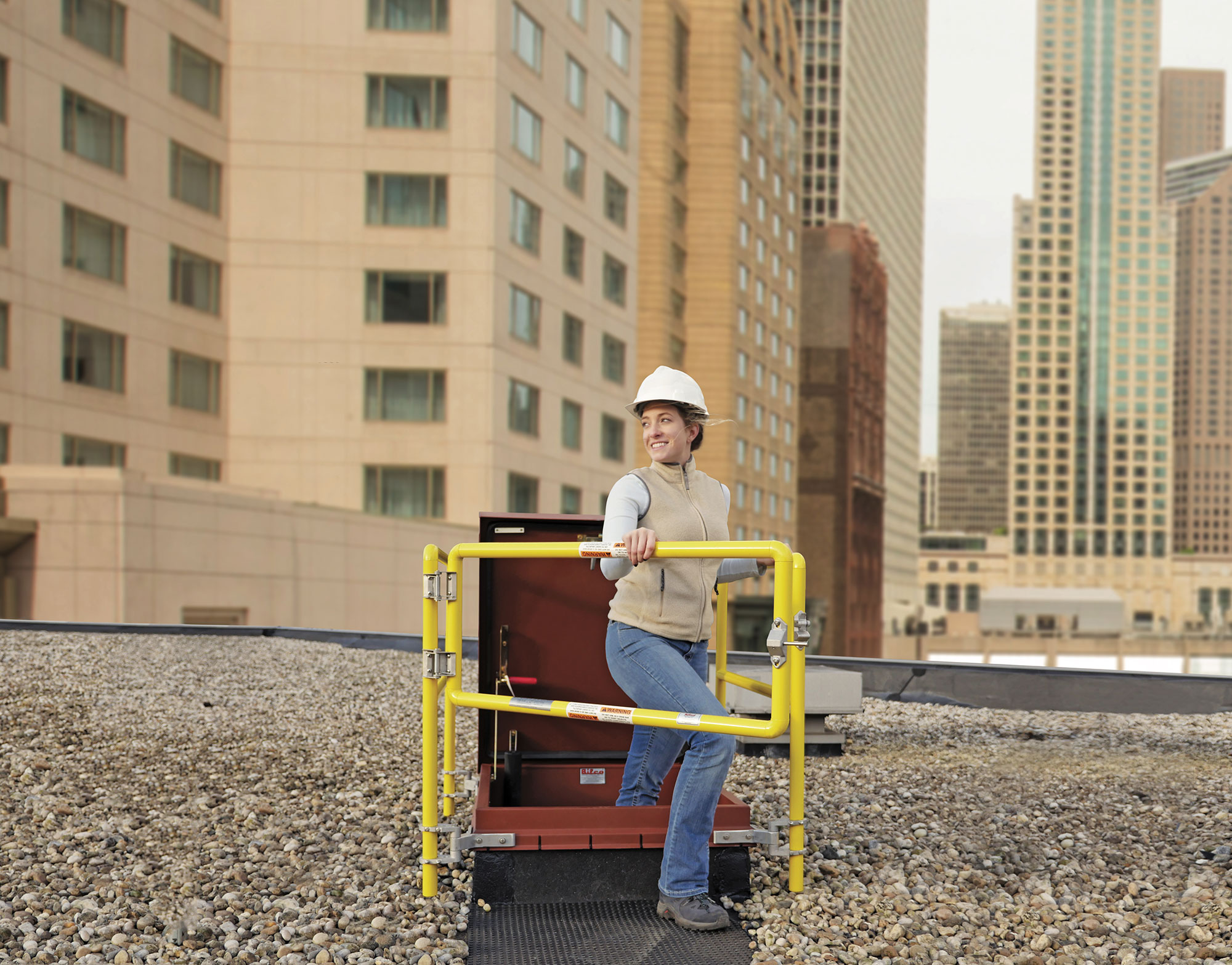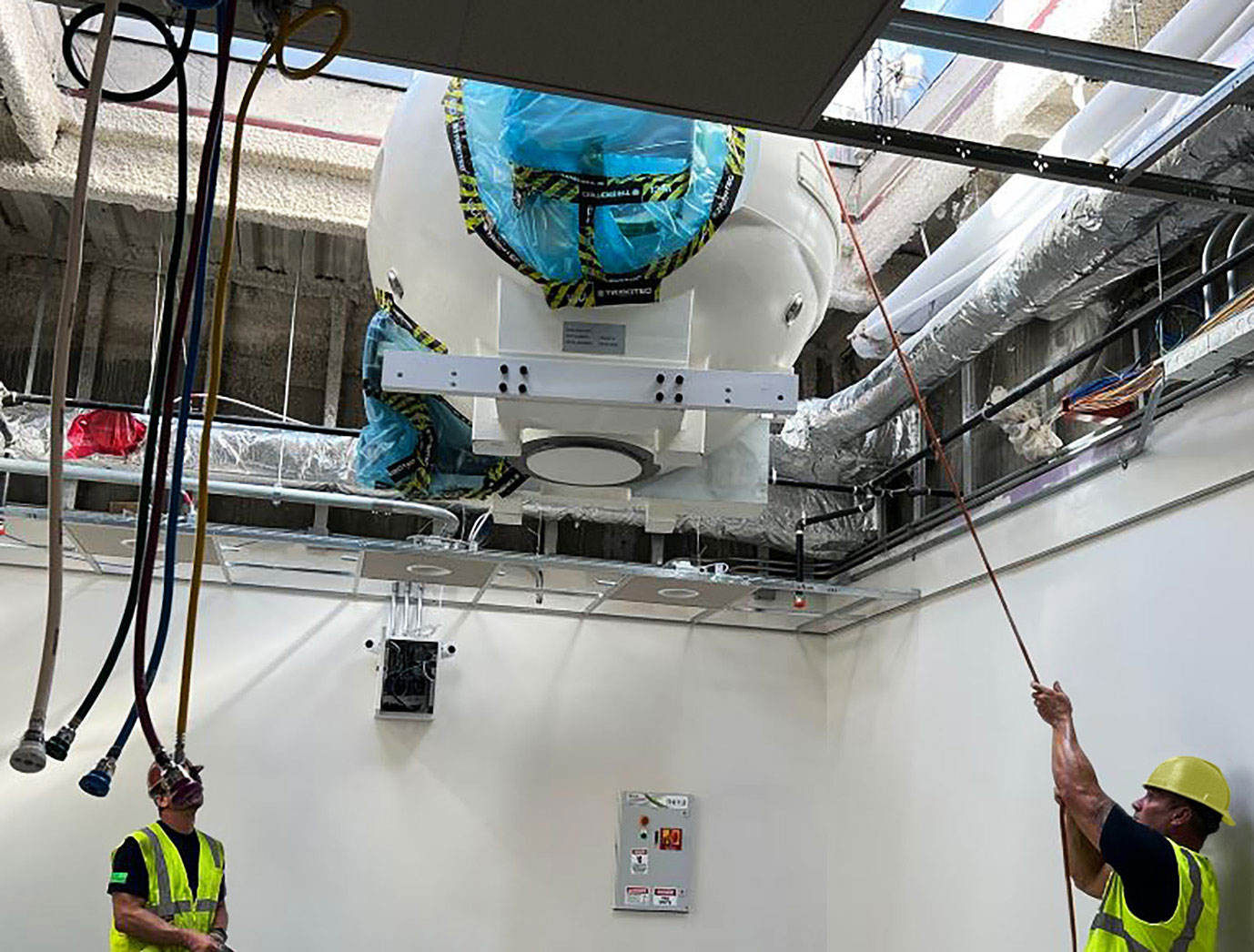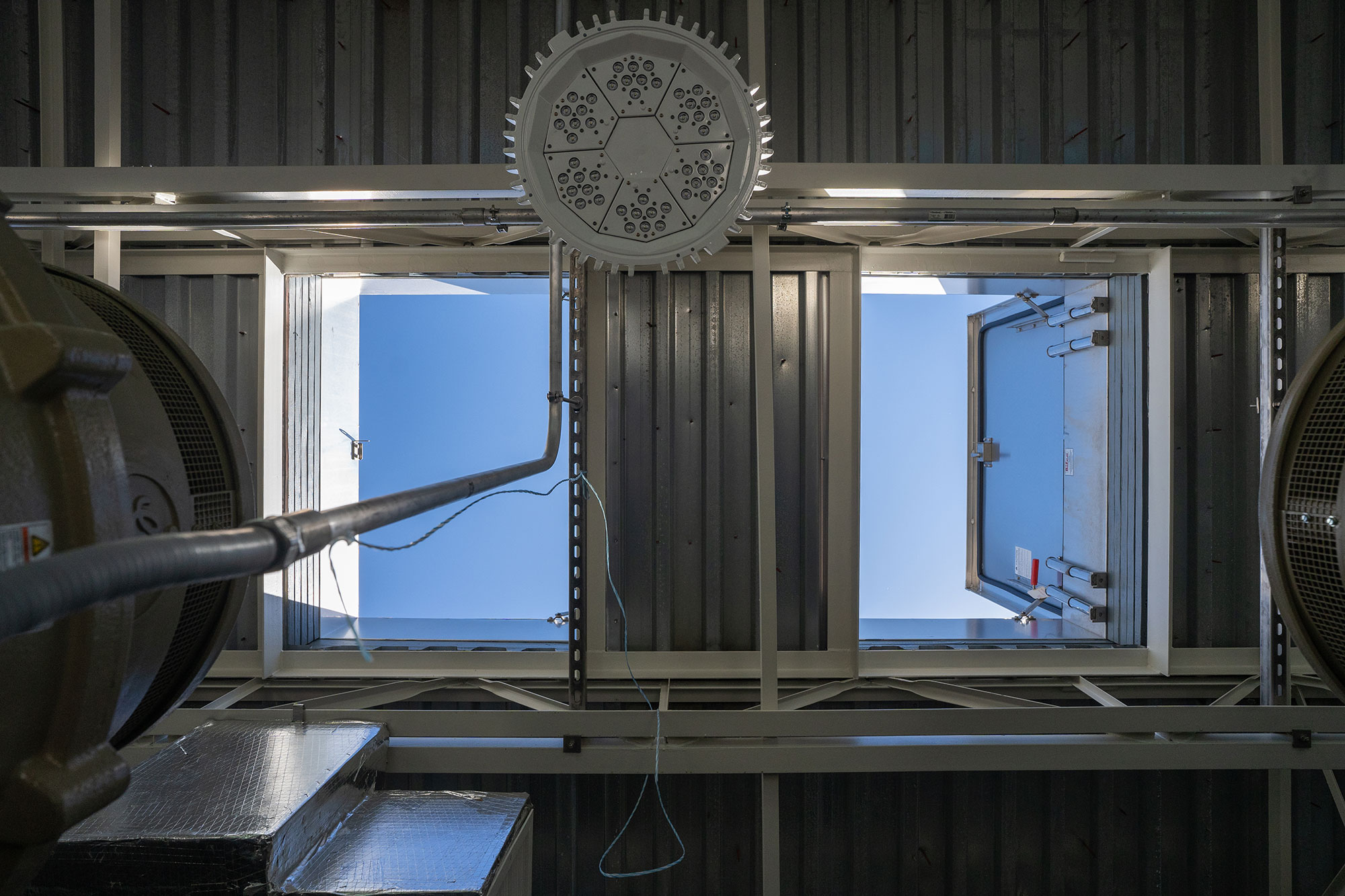Roof Hatches Simplified
Learning Objectives:
- Explain the function and benefits of roof hatches for commercial buildings and their safety requirements.
- Describe the different styles of roof hatches and common applications.
- Discuss how building codes and standards impact the specification of roof hatches, especially regarding fire protection and safety.
- Identify key features of modern roof hatches that can impact the energy efficiency of a building.
- Learn about the future and growing trends for roof hatch products.
Credits:
This course is approved as a Structured Course
This course can be self-reported to the AANB, as per their CE Guidelines
Approved for structured learning
Approved for Core Learning
This course can be self-reported to the NLAA
Course may qualify for Learning Hours with NWTAA
Course eligible for OAA Learning Hours
This course is approved as a core course
This course can be self-reported for Learning Units to the Architectural Institute of British Columbia

Photo courtesy of The BILCO Company
Roof hatches with rails provide safe and convenient access to the roof.
Roof hatches are a common building component used to access the roof. In commercial settings, they are commonly installed to access the roof area for maintenance purposes, such as air treatment systems, air conditioning units, and other mechanical systems. They are installed at hospitals, offices, industrial buildings, retail facilities, and any commercial building that requires rooftop access. In single-family residential and multi-family applications, they can provide access to rooftop decks, which is a growing trend.
This course explores the features and benefits of roof hatches, their design, and options for enhanced performance. The course dives into pertinent building codes for hatches, their specific language (or lack thereof), and the existing consensus among fire protection experts regarding fire protection ratings requirements for roof hatches. The definition of these requirements has caused some confusion among architects, construction managers, and code enforcement officials which will be addressed in this course.
THE FUNCTION AND BENEFITS OF ROOF HATCHES
Roof hatches provide safe and convenient access to roof areas by means of an interior ladder, ship stair, or service stair. Hatches typically feature engineered lift assistance for easy one-hand operation.
When architects and contractors think of roof hatches, they typically envision a standard 36-inch-by-30-inch hatch allowing a technician to service a rooftop air conditioning unit on a commercial building by means of a fixed ladder. But the applications for roof hatches are so much more diverse than that. For instance, as we’ll see later in the course, roof hatches give building occupants access to ever-more-popular rooftop decks that increase usable living space and provide views. Hatches are also available in custom sizes to provide an accessible way to install or remove large pieces of equipment from a building.
The Case of Ochsner Medical Center in New Orleans
Consider the case at Ochsner Medical Center in New Orleans and the massive piece of state-of-the-art medical equipment that needed to be installed in a building.
The options for maneuvering a 21-ton, multi-million piece of life-saving medical equipment within a medical facility are limited. The team at Woodward Design+Build found its solution with a custom-sized roof hatch.
The Louisiana-based construction company renovated a 9,000-square-foot space for an oncology suite at Ochsner. The suite links to the Gayle and Tom Benson Cancer Center, which opened in 2020 after the completion of a two-year, $56 million expansion. The oncology suite expansion occurred in a building that dates back to the mid-20th century.
One of the most significant challenges for Woodward centered on installing a Gamma Knife into the building. Only about 300 facilities worldwide have the $7-million device, which uses radiation and computer-guided planning to treat brain tumors, vascular malformation, and other abnormalities of the brain.
Treatment with the Gamma Knife is a non-invasive alternative to traditional brain surgery. In the procedure, high-dose beams of the cobalt-60 radiation converge on selected areas deep within the brain to treat the patient.
The Gayle and Tom Benson Cancer Center is a linchpin to cancer patients in New Orleans and offers a holistic, patient-centered approach that is among the nation's most advanced cancer treatment centers.
Cranes lowered the device into the building through a custom 12-foot-by-9-foot roof hatch. The roof hatch features engineered lift assistance to allow for easy, one-hand operation despite its large size and, most importantly, weather-tight construction, given the exorbitant cost of the medical equipment directly below the hatch.
"We needed a customized hatch solution for the size of the opening," said Ryan Kersten, Project Manager for Woodward. "The roof hatch company really fit the bill and was able to accommodate the varying sizes that we looked at. The size of the hatch grew in design as we completed the design phase."
In the future, medical workers must access the Gamma Knife unit periodically for maintenance and repair. The radiation source in this sophisticated medical device, cobalt-60, has a half-life of 5.3 years. The roof hatch will allow workers to replace the radiation source as necessary without removing the equipment. "They will have to replenish the radiation source by going in through the roof, so this hatch allows them access to do that," Kersten said. "There isn't any other way to do that."

Photo courtesy of Woodward Design+Build
A large roof hatch allows this massive Gamma Knife unit to be lowered into an oncology suite at Ochsner Medical Center in New Orleans.
Roof Hatches Provide Easy Access for Colorado Water Reclamation Facility
Rapidly growing cities and their need for infrastructure have increased the need for reliable roof hatches.
For instance, Parker, Colorado, has grown from less than 300 residents a few decades ago to more than 60,000 in 2021.
As the community expanded, keeping up with infrastructure improvements remained a concern. The most recent was the overhaul of the North Water Reclamation Facility (NWRF). Garney Construction completed a three-year, $57-million project that expanded the facility from 2 million gallons per day (MGD) to 3.8 MGD.
The complex project included the construction of a new headworks facility and the establishment of new plant power and distribution. The requirement to maintain plant operations throughout construction made the immense scope of the project more challenging.
Garney installed 10 roof hatches in the reclamation facility to provide workers with access to equipment for maintenance and replacement purposes.
Consistency of equipment was a priority, according to Stephanie Sansom, Senior Project Manager for the Parker Water & Sanitation District. Therefore, the specified roof hatches were manufactured by the same company as the existing ones throughout the district. "We haven't had problems with their hatches in the past,” she said. “So why change something if it's already working? It makes it easier on operations and maintenance when we've got the same equipment throughout the district."
The manufacturer’s hatches are commonly used in projects associated with wastewater management. The hatches feature corrosion resistance and safe, easy one-hand operation.

Photo courtesy of Jenn Bakker/Breathtakingmomentsphotography.com
Ten roof hatches at a reclamation facility in Parker, Colorado, provide workers with access to equipment for maintenance and replacement purposes.
DESIGN FEATURES OF ROOF HATCHES
The key design features of modern roof hatches can impact the overall building performance and durability of a commercial roof. Here are factors to consider:
Size
Roof hatches are available in a wide range of sizes. There are numerous factors to consider when selecting a hatch size for a particular application. First, determine whether the hatch will be used simply to gain access to a roof or whether it is needed to install or remove equipment from a building.
Small or single-cover models should be specified if a hatch is used only for personnel access. These models typically are used with a fixed ladder, ship stair or service (full-size) stair. Roof hatch size is defined by measuring its inside frame opening, and the roof opening should be roughly the same as the hatch size.
Some industry-standard sizes are:
- 36 x 30 or 36 x 36 inches for ladder access
- 30 x 54 inches for ship- or steep-stair access
- 30 x 96 inches for service stair access
















